Scaffolding Companies Church Hill
Best Scaffolding Builders in Church Hill
Receive 3 FREE Scaffolding Company quotes for your project today! Compare profiles, reviews, accreditations, portfolio, etc... and choose the best offer.

Performance Contracting Inc
2.47 reviews1430 E. Weisgarber, Knoxville, 37909, USPerformance Contracting, Inc. is a leading specialty contractor in the United States, providing a comprehensive range of solutions and services to its valued clients. With over 60 years of industry experience, PCI expertly delivers innovative solutions tailored to the specific needs of diverse market sectors. The company's dedication to excellence ensures that it consistently meets and exceeds customer expectations, setting the standard in the construction industry. PCI's people-centric culture is nurtured by employees who embody its core values daily, and it's passionate about empowering them to achieve their greatest potential. The company's safety program is award-winning, providing training and keeping workers fully dedicated and accountable to the safety and integrity of every project and property. PCI's versatility and extensive knowledge of insulation and specialty services provide quality workmanship, superior project management, and exceptional safety performance.
- Services
- Why Us?
- Gallery
Get Quote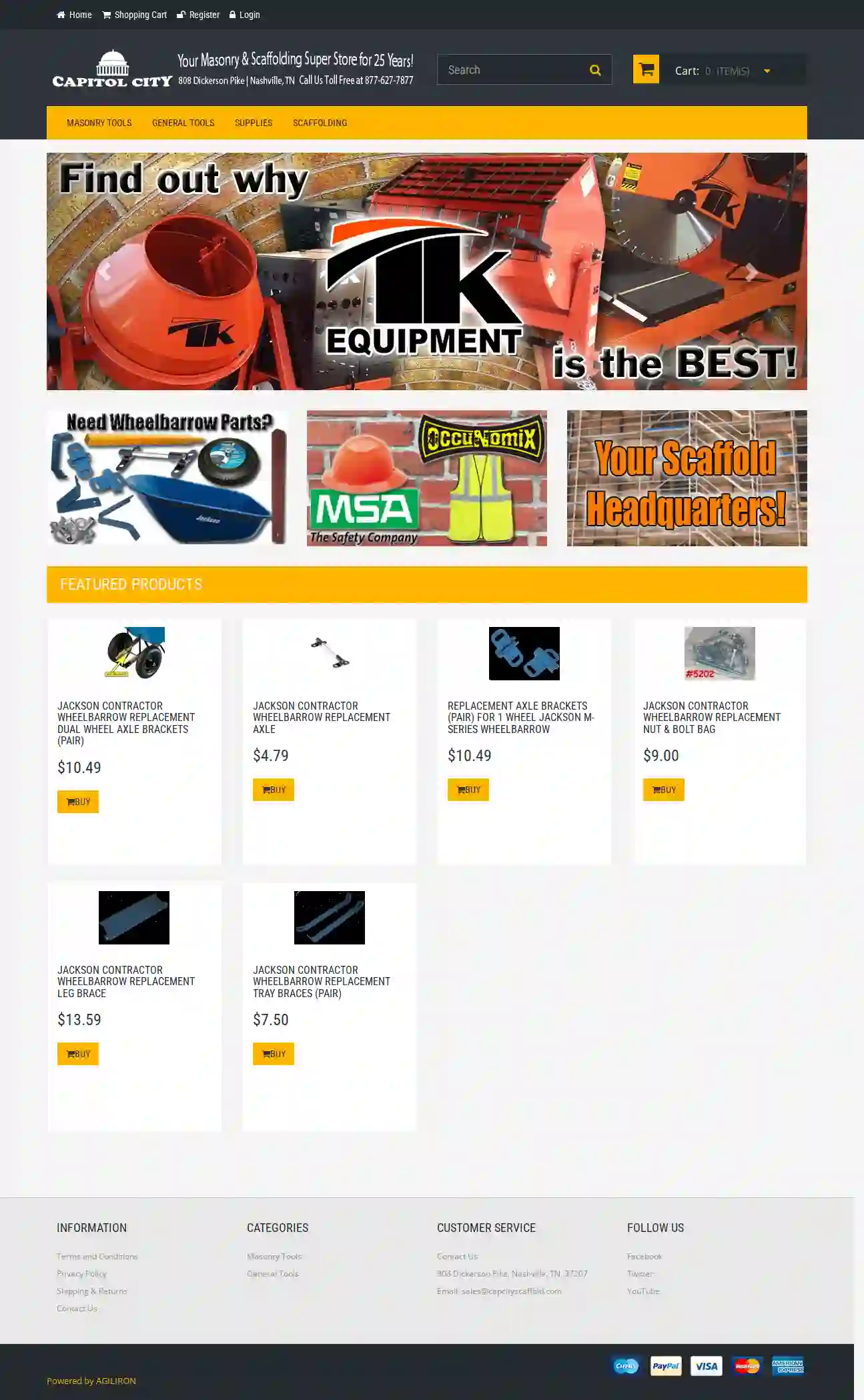
Capitol City Scaffolding And Equipment
4.743 reviews808 Dickerson Pike, Nashville, TN, 37207, USAbout CapCity Scaffold CapCity Scaffold is your one-stop shop for all your scaffolding needs. We offer a wide variety of scaffolding products, including scaffolding, ladders, and other construction equipment. We are committed to providing our customers with the highest quality products and services at competitive prices. Our team of experts is always available to answer your questions and help you find the right products for your needs. We are proud to serve the Nashville, TN area. We are committed to providing our customers with the best possible service and support. We are always looking for ways to improve our products and services. We are committed to providing our customers with the best possible experience.
- Services
- Why Us?
- Gallery
Get Quote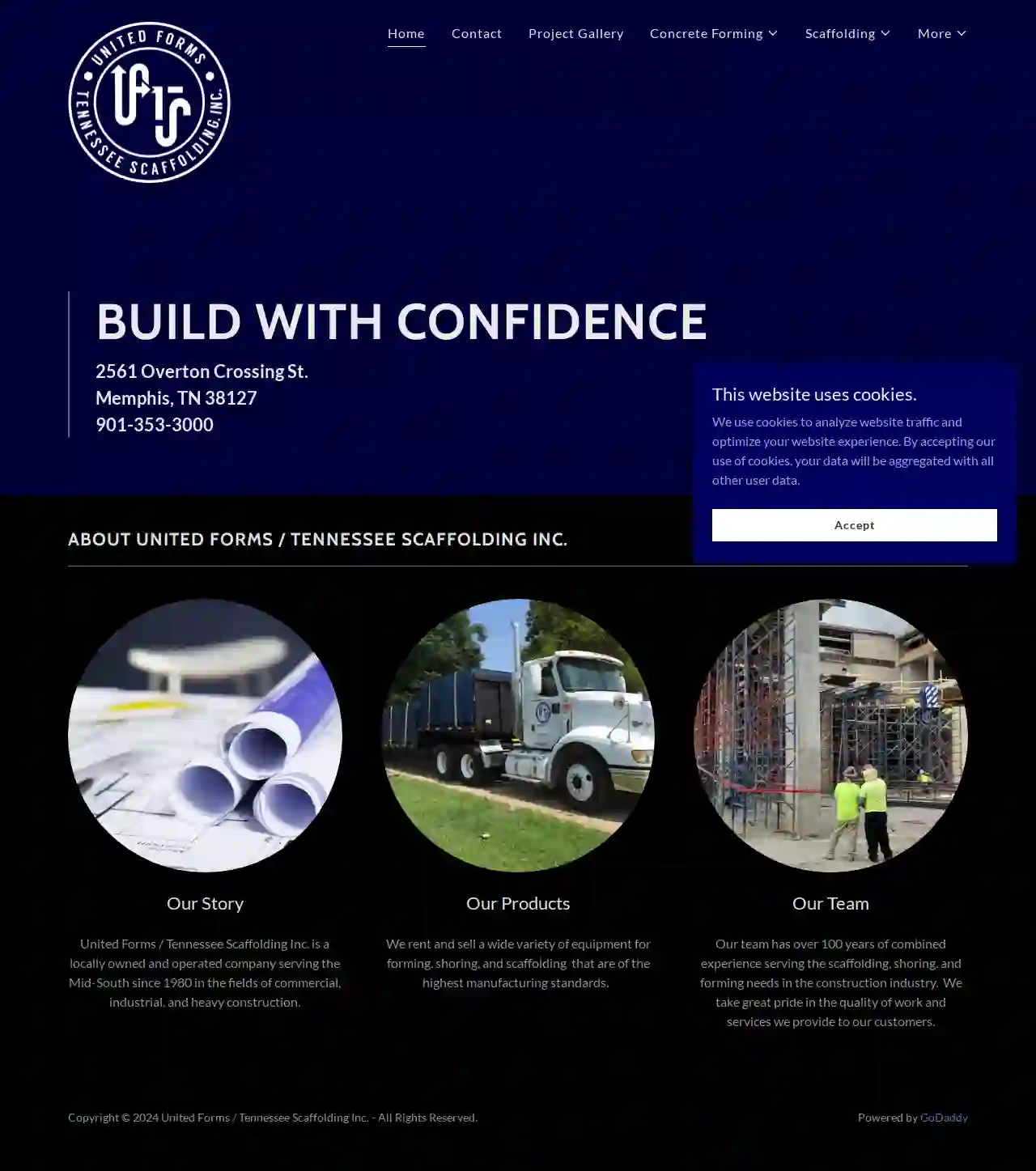
United Forms/Tennessee Scaffolding Inc.
4.115 reviews2561 Overton Crossing St., Memphis, 38127, USUnited Forms / Tennessee Scaffolding Inc. is a locally owned and operated company serving the Mid-South since 1980 in the fields of commercial, industrial, and heavy construction. We rent and sell a wide variety of equipment for forming, shoring, and scaffolding that are of the highest manufacturing standards. Our team has over 100 years of combined experience serving the scaffolding, shoring, and forming needs in the construction industry. We take great pride in the quality of work and services we provide to our customers.
- Services
- Why Us?
- Gallery
Get Quote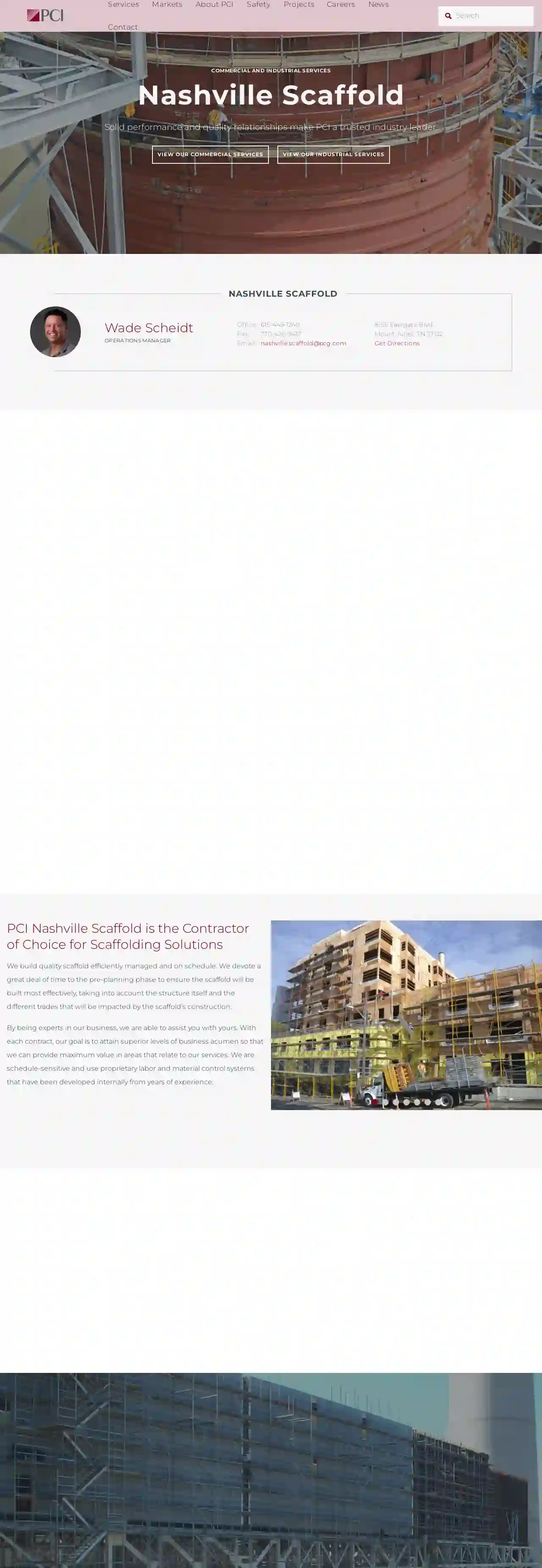
Performance Contracting Inc
4.52 reviewsMount Juliet, TN, 8155 Eastgate Blvd., 37122, USPerformance Contracting, Inc. (PCI) is a leading specialty contractor in the United States, providing a wide range of services and products to industrial, commercial, and non-residential sectors. PCI is a 'one-stop-shop' contractor, offering comprehensive solutions tailored to clients' specific needs. The company prioritizes safety, with an award-winning 'Target Zero Incidents' safety program that ensures a secure and efficient work environment for all projects. PCI's commitment to excellence and customer satisfaction sets them apart as a trusted industry leader.
- Services
- Why Us?
- Accreditations
- Our Team
- Testimonials
- Gallery
Get Quote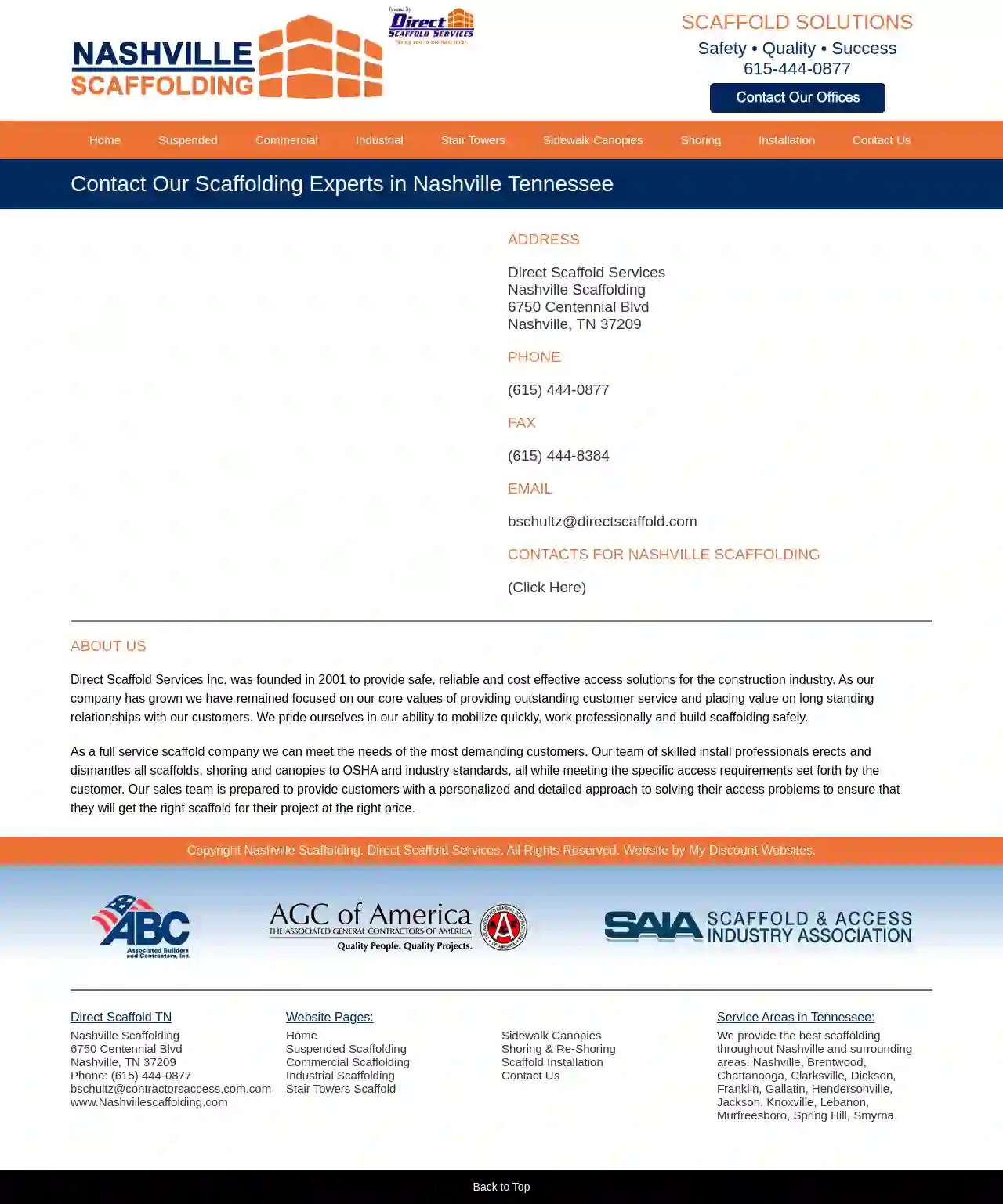
Direct Scaffold Services / Nashville Scaffolding
4.414 reviews6750 Centennial Blvd, Nashville, 37209, USDirect Scaffold Services Inc. was founded in 2001 to provide safe, reliable and cost effective access solutions for the construction industry. As our company has grown we have remained focused on our core values of providing outstanding customer service and placing value on long standing relationships with our customers. We pride ourselves in our ability to mobilize quickly, work professionally and build scaffolding safely. Our team of skilled install professionals erects and dismantles all scaffolds, shoring and canopies to OSHA and industry standards, all while meeting the specific access requirements set forth by the customer. Our sales team is prepared to provide customers with a personalized and detailed approach to solving their access problems to ensure that they will get the right scaffold for their project at the right price.
- Services
- Why Us?
- Accreditations
- Gallery
Get Quote
BrandSafway Solutions Nashville
3.619 reviews123 BrandSafway Drive, Nashville, 37209, USBrandSafway is a leading provider of access solutions, including scaffolding, aerial work platforms, and forming and shoring. With a strong commitment to safety, quality, and customer satisfaction, BrandSafway offers a wide range of services tailored to meet the unique needs of clients across various industries. Their team of experienced professionals is dedicated to delivering innovative solutions that enhance efficiency and productivity, ensuring successful project outcomes.
- Services
- Why Us?
- Accreditations
- Our Team
- Testimonials
Get Quote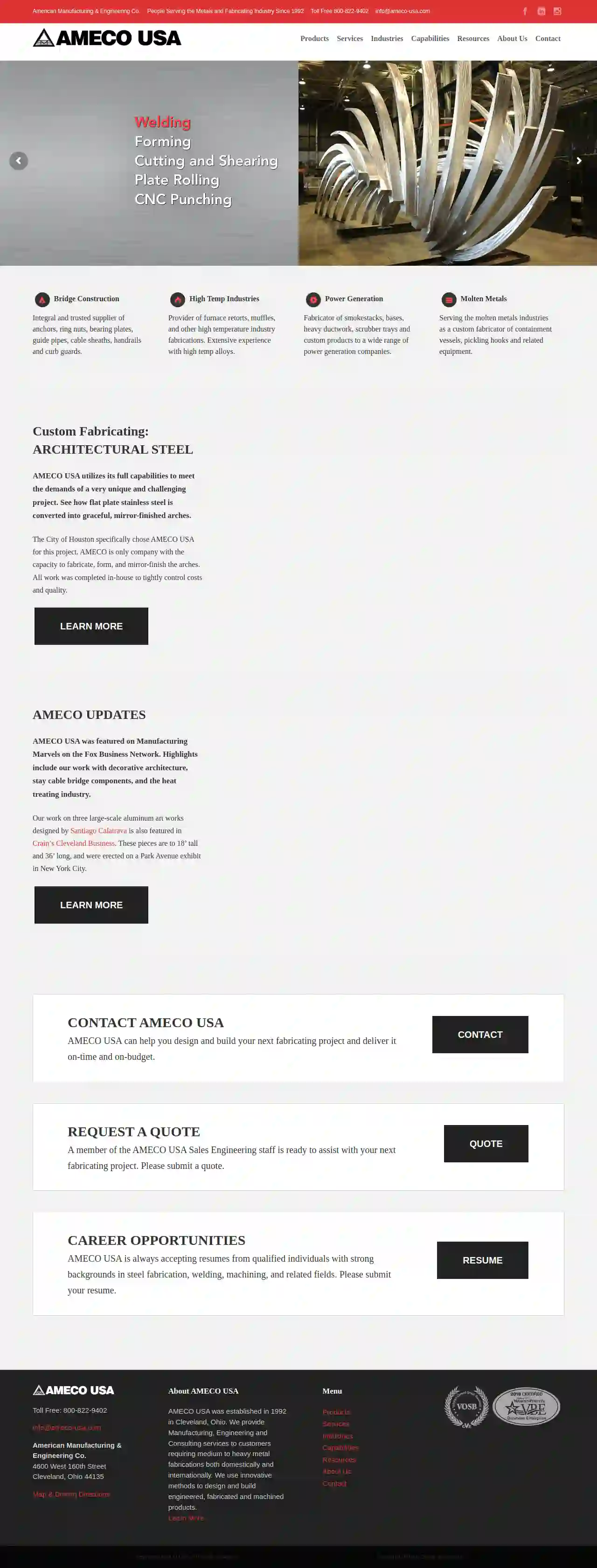
AMECO USA
4.710 reviews4600 West 160th Street, Cleveland, 44135, USAbout AMECO USA American Manufacturing & Engineering Company (AMECO USA) was established in 1992 in Cleveland, Ohio. AMECO USA provides Manufacturing, Engineering and Consulting services to customers requiring medium to heavy metal fabrications. AMECO USA is a full custom solutions provider to industrial manufacturing companies both domestically and internationally. We specialize in innovative methods to design and build Engineered fabricated and machined products.
- Services
- Why Us?
- Accreditations
- Our Team
- Gallery
Get Quote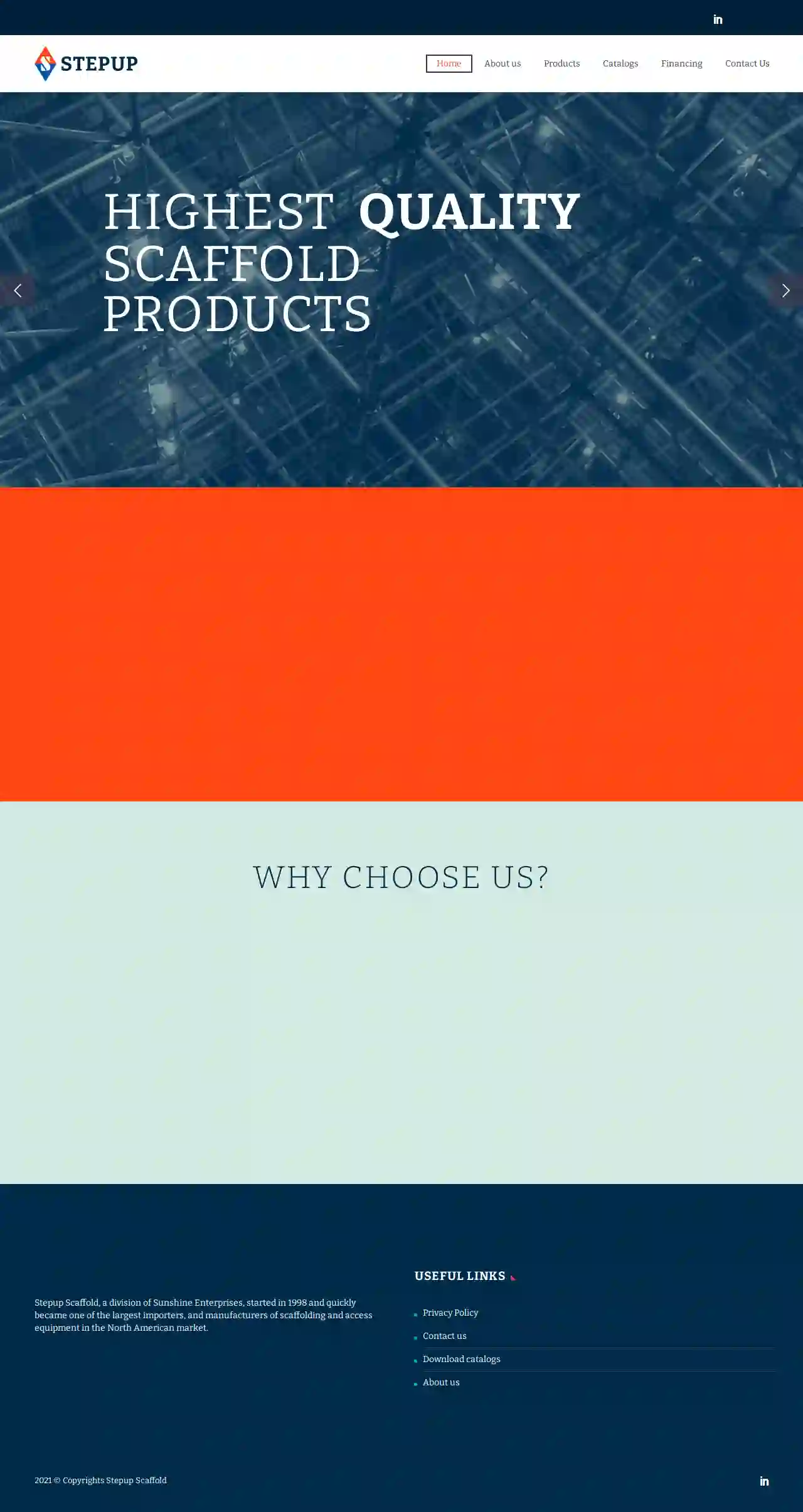
StepUP Scaffolding LLC - Corporate Headquarters
51 reviewsMiami, FL, USA, 1234 NW 12th St, 33122, USStepUp Scaffold, a division of Sunshine Enterprises, started in 1998 and quickly became one of the largest importers and manufacturers of scaffolding and access equipment in the North American market. Our commitment to Quality, Service, and Satisfaction influences everything we do. We believe that a high tide raises all boats, so to raise everything and everyone, our statement of purpose, simply put is that “We elevate our employees, customers, and industries to safely move, build, and maintain the world.”
- Services
- Why Us?
- Accreditations
- Our Team
- Testimonials
- Gallery
Get Quote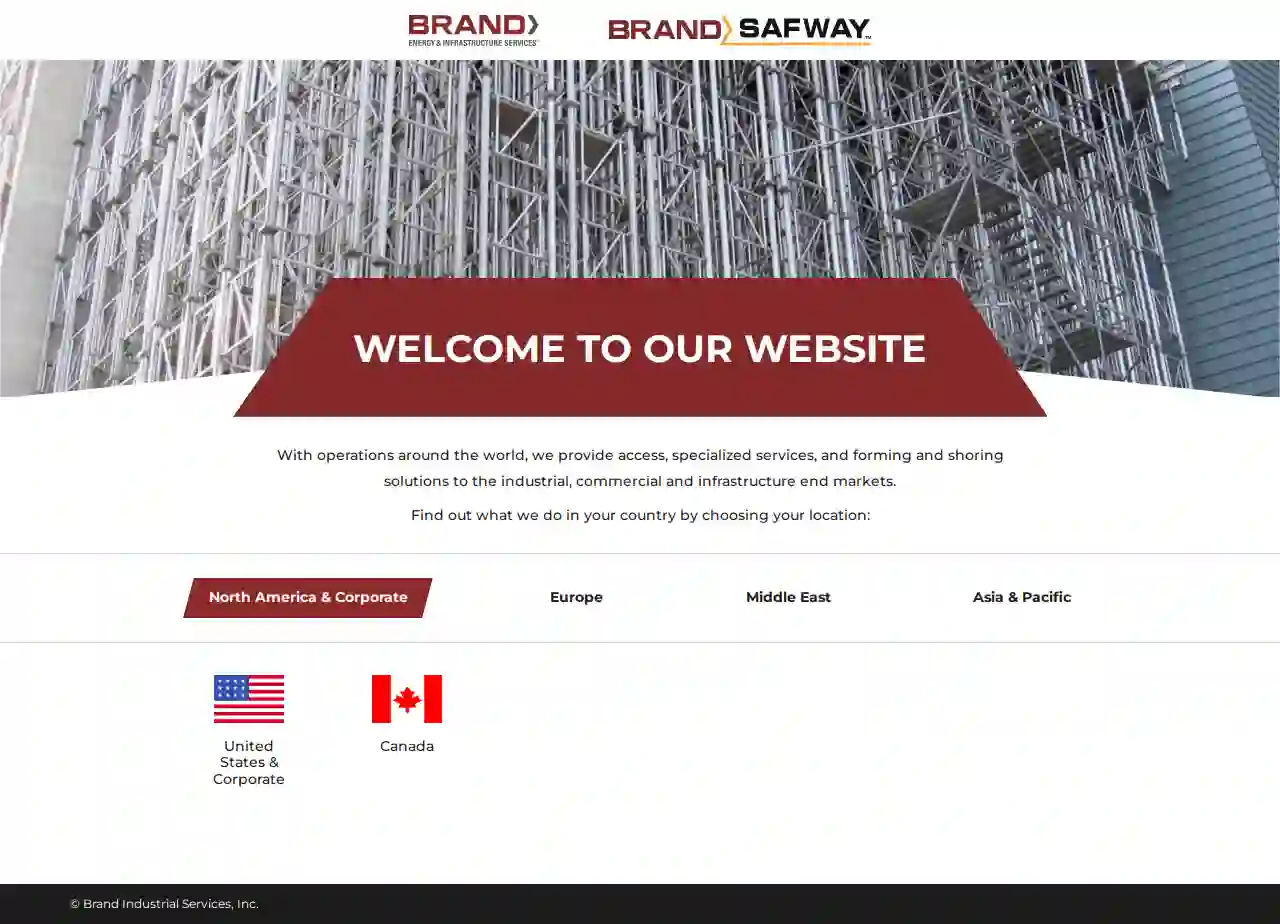
Brand Energy Services
11 reviewsNashville, USWelcome to our website. With operations around the world, we provide access, specialized services, and forming and shoring solutions to the industrial, commercial, and infrastructure end markets. Find out what we do in your country by choosing your location: North America & Corporate Europe Middle East Asia & Pacific United States & Corporate Canada Belgium France Germany Netherlands Romania U.K. Saudi Arabia United Arab Emirates Australia India © Brand Industrial Services, Inc.
- Services
- Why Us?
- Gallery
Get Quote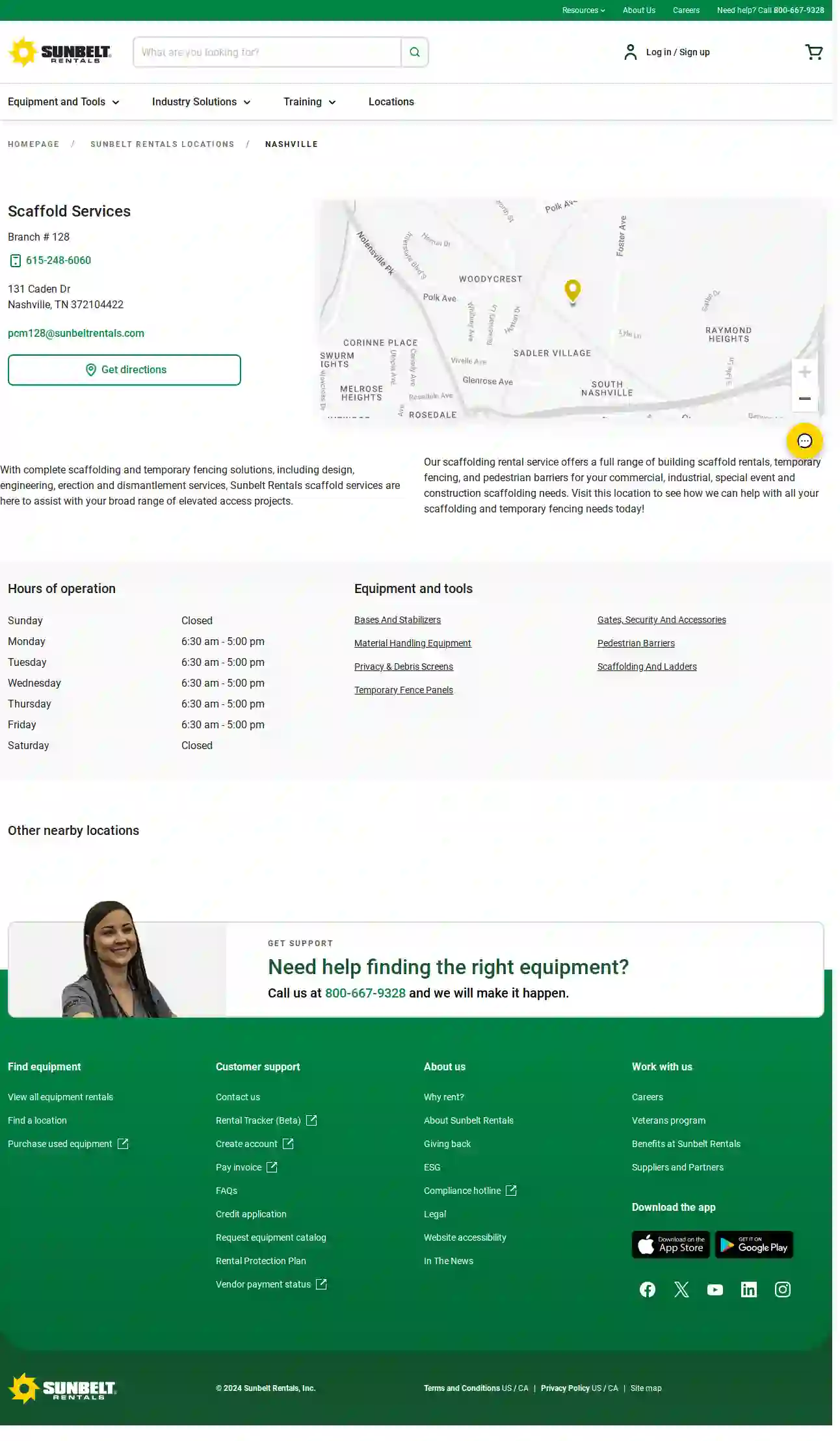
Sunbelt Rentals Scaffold Services
510 reviewsSunbelt Rentals Inc., 123 Sunbelt Lane, Nashville, 12345, USSunbelt Rentals is a leading provider of equipment rentals, offering a wide range of aerial work platforms, scaffolding, ladders, cranes, boom trucks, and more. With a commitment to customer satisfaction and safety, Sunbelt Rentals provides top-quality equipment and exceptional customer service. Their team of experts is dedicated to helping customers find the right equipment for their projects. Sunbelt Rentals also offers a variety of resources, including a blog, FAQs, and customer support, ensuring that customers have all the information they need to make informed decisions.
- Services
- Why Us?
- Accreditations
- Our Team
- Testimonials
- Gallery
Get Quote
Over 2,353+ Scaffolding Contractors registered
Our scaffolding companies operate in Church Hill & beyond!
ScaffoldingHQ has curated and vetted Top Scaffolding Businesses arround Church Hill. Find a top & reliable contractor today.
Frequently Asked Questions About Scaffolding Companies
- Hire Professionals: Just like erection, dismantling should be done by qualified and experienced scaffolding erectors.
- Reverse the Erection Process: The dismantling process should generally follow the reverse order of erection.
- Clear the Area: Ensure the area below is free from people and obstacles.
- Lower Materials Safely: Use ropes or other safe methods to lower dismantled components to the ground.
- Inspect Components: As components are removed, inspect them for damage and store them properly for future use.
- Project Size and Complexity: The height, configuration, and accessibility of the scaffolding will influence the amount of materials and labor required.
- Scaffolding Type: Different scaffolding systems (tube and clamp, system scaffolding, suspended scaffolding) have varying costs.
- Duration of Rental: The length of time you need the scaffolding will affect the overall rental price.
- Location: Labor costs and material availability can differ based on your location.
- Additional Services: Some companies may offer additional services like erection, dismantling, or transportation, which can add to the cost.
- Licensing and Insurance: Verify their licenses are current and that they have adequate insurance coverage.
- Experience: Choose a company with a history of successfully completing similar projects. Ask for references and check their portfolio.
- Safety Record: Inquire about their safety practices and accident history. A strong safety culture is essential.
- Professionalism: Observe their communication, responsiveness, and attention to detail. A reputable company will be organized and transparent.
- Reviews and Testimonials: Read online reviews and feedback from previous clients to assess their reputation.
- Industry Affiliations: Membership in professional organizations like the NASC (National Access & Scaffolding Confederation) indicates a commitment to industry standards.
How do I dismantle scaffolding safely?
How much does scaffolding cost to hire in the USA?
How do I know if a scaffolding company is reputable?
Can I erect scaffolding myself?
How do I dismantle scaffolding safely?
- Hire Professionals: Just like erection, dismantling should be done by qualified and experienced scaffolding erectors.
- Reverse the Erection Process: The dismantling process should generally follow the reverse order of erection.
- Clear the Area: Ensure the area below is free from people and obstacles.
- Lower Materials Safely: Use ropes or other safe methods to lower dismantled components to the ground.
- Inspect Components: As components are removed, inspect them for damage and store them properly for future use.
How much does scaffolding cost to hire in the USA?
- Project Size and Complexity: The height, configuration, and accessibility of the scaffolding will influence the amount of materials and labor required.
- Scaffolding Type: Different scaffolding systems (tube and clamp, system scaffolding, suspended scaffolding) have varying costs.
- Duration of Rental: The length of time you need the scaffolding will affect the overall rental price.
- Location: Labor costs and material availability can differ based on your location.
- Additional Services: Some companies may offer additional services like erection, dismantling, or transportation, which can add to the cost.
How do I know if a scaffolding company is reputable?
- Licensing and Insurance: Verify their licenses are current and that they have adequate insurance coverage.
- Experience: Choose a company with a history of successfully completing similar projects. Ask for references and check their portfolio.
- Safety Record: Inquire about their safety practices and accident history. A strong safety culture is essential.
- Professionalism: Observe their communication, responsiveness, and attention to detail. A reputable company will be organized and transparent.
- Reviews and Testimonials: Read online reviews and feedback from previous clients to assess their reputation.
- Industry Affiliations: Membership in professional organizations like the NASC (National Access & Scaffolding Confederation) indicates a commitment to industry standards.